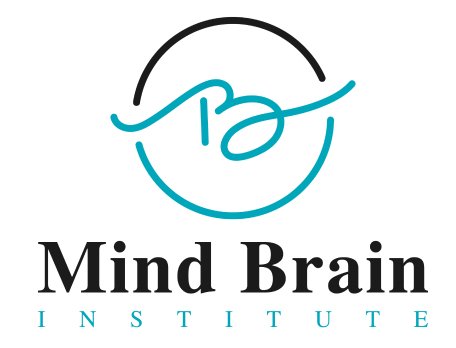
- Posted By MindBrain
- Comments 0
Unlocking Hope: The Therapeutic Integration of Ketamine Therapy for Treatment-Resistant Depression
Introduction
In the evolving landscape of mental health care, ketamine therapy has emerged as a ground-breaking treatment option for individuals battling treatment-resistant depression (TRD), Obsessive-Compulsive Disorder (OCD), and anxiety. This innovative approach addresses not only the biological aspects of depression but also its psychological and experiential dimensions. By leveraging an integrative approach to ketamine therapy, clinicians can maximize its therapeutic potential and help patients achieve lasting recovery.
This comprehensive guide explores the principles, mechanisms, and practical applications of ketamine therapy from an integrative perspective, highlighting its benefits and how it can transform mental health treatment. With more individuals seeking rapid and effective relief, understanding the nuances of ketamine therapy is essential.
Understanding Treatment-Resistant Depression (TRD)
Treatment-resistant depression (TRD) refers to a severe form of major depressive disorder (MDD) that does not respond to standard antidepressant medications or psychotherapy. Statistics indicate that approximately 12–20% of individuals diagnosed with depression experience TRD, creating a significant public health challenge. Furthermore, the societal and economic burden of TRD is substantial, costing billions annually in lost productivity and healthcare expenses.
Traditional antidepressants often take weeks to show effects, and even then, their efficacy is limited for many individuals. These limitations have driven the exploration of alternative therapies, with ketamine therapy emerging as a beacon of hope for individuals with TRD. Unlike conventional treatments, ketamine offers rapid relief, often within hours, making it a game-changer for those in acute distress.
The Role of the Default Mode Network in TRD
Recent studies highlight the role of the default mode network (DMN) in perpetuating depressive symptoms. The DMN, a network of interconnected brain regions, is often overactive in individuals with depression, leading to rumination and negative thought patterns. Ketamine disrupts this overactivity, allowing patients to break free from destructive cognitive loops.
What Makes Ketamine Therapy Unique?
Ketamine, originally developed as an anesthetic, is now recognized for its rapid and robust antidepressant effects. Unlike traditional antidepressants, which primarily target monoamine neurotransmitters such as serotonin and norepinephrine, ketamine modulates glutamate—the brain’s primary excitatory neurotransmitter. This unique mechanism accounts for ketamine’s ability to:
Promote Neuroplasticity:
Ketamine stimulates synaptogenesis, enhancing neural connectivity in brain regions like the prefrontal cortex and hippocampus.
Reduce Inflammation:
Chronic inflammation contributes to depression, and ketamine reduces pro-inflammatory cytokines.
Induce High Entropy Brain States:
Ketamine temporarily increases brain entropy, disrupting rigid thought patterns and promoting cognitive flexibility.
Elicit Psychedelic Experiences:
At sub-anesthetic doses, ketamine produces dissociative or transcendent experiences that can help patients gain new perspectives on their lives and struggles.
These effects make ketamine a powerful tool for addressing the multidimensional nature of TRD. Beyond its biochemical effects, ketamine also facilitates introspection and emotional healing, especially when paired with psychotherapy.
The Need for an Integrative Approach to Ketamine Therapy
To harness the full potential of ketamine therapy, an integrative approach is essential. This involves combining ketamine’s biological effects with supportive therapeutic practices, such as psychotherapy, patient education, and personalized care. Organizations like the Mind Brain Institute are leading the way in promoting responsible practices in India. The following sections outline the core components of this approach, emphasizing their importance in optimizing outcomes:
1. Patient Education and Preparation
Informed patient education is a cornerstone of integrative ketamine therapy. Such kind of education is possible when the patients visit the Mind Brain Institute situated in Delhi, NCR. They need to understand:
- How ketamine works in the brain.
- What to expect during a treatment session.
- The potential side effects, such as dissociation or mild agitation.
- The importance of integrating their ketamine experiences into their broader treatment goals.
Thus, educating patients helps manage expectations, reduces anxiety, and fosters active participation in the therapeutic process. Addressing common misconceptions, such as concerns about addiction or safety, is also crucial in building trust and compliance.
2. Creating the Optimal Set and Setting
The set (mindset) and setting (environment) significantly influence the therapeutic outcomes of ketamine therapy. A calm, supportive, and structured environment enhances the patient’s sense of safety and openness during treatment at the Mind Brain Institute in New Delhi, India. Key considerations include:
Comfortable Physical Space:
A quiet, softly lit room can help patients relax.
Therapeutic Presence:
Having a trained therapist or guide available ensures emotional support throughout the session at the Mind Brain Institute in New Delhi.
Music and Sensory Input:
Carefully curated music can deepen introspection and emotional processing.
This nurturing environment creates the conditions necessary for patients to explore their inner experiences and achieve meaningful breakthroughs. Emerging technologies, such as virtual reality (VR), are also being explored to enhance the therapeutic setting.
3. Personalizing Ketamine Dosing Protocols
Ketamine therapy is not one-size-fits-all. Dosage and administration methods should be tailored to each patient’s unique needs. Sub-anesthetic doses, typically administered via intravenous (IV) infusion, are most common for TRD.
Emerging tools, such as EEG monitoring, can optimize dosing by assessing cortical activity in real time, ensuring the dose induces therapeutic dissociation without overwhelming the patient. Regular assessments throughout the treatment course help refine protocols for maximal efficacy.
4. Timing Adjunctive Psychotherapy
One of ketamine’s key advantages is its ability to create a “window of neuroplasticity,” a period of heightened brain adaptability lasting 24–48 hours post-treatment. Scheduling psychotherapy sessions during this window allows patients to:
- Consolidate insights gained during ketamine sessions.
- Reframe maladaptive thought patterns.
- Explore new coping strategies in a supportive therapeutic setting.
Integrating cognitive-behavioral therapy (CBT) or psychodynamic therapy into the ketamine protocol can significantly enhance long-term outcomes. Therapists at the Mind Brain Institute in Delhi NCR, India often use these sessions to help patients integrate their psychedelic experiences into actionable life changes.
5. Monitoring and Measuring Progress
Advanced tools and biomarkers play a pivotal role in optimizing ketamine therapy. Regular monitoring allows clinicians to:
- Track changes in inflammatory markers, such as cytokines.
- Assess brain connectivity via imaging techniques like fMRI or EEG.
- Evaluate patient-reported outcomes, such as mood, functionality, and quality of life.
These data-driven insights help refine treatment protocols and ensure sustained benefits. For example, wearable EEG devices are now being tested to provide real-time feedback on brain activity during ketamine sessions.
6. Addressing Side Effects and Safety Concerns
Although ketamine has a strong safety profile, it’s important to address potential side effects:
Dissociation:
This temporary state is often therapeutic but can be distressing for some patients. Preparing patients well in advance can mitigate anxiety.
Cognitive Impairment:
Some individuals may experience temporary difficulties with memory or concentration post-treatment.
Emergence Phenomena:
Mild agitation or hallucinations can occur but are manageable with supportive care and, if needed, adjunctive medications.
A well-trained clinical team from the Mind Brain Institute, Delhi NCR ensures these side effects are managed effectively, maintaining patient safety and comfort.
Real-Life Transformations with Integrative Ketamine Therapy
Patients undergoing integrative ketamine therapy often describe profound, life-changing experiences. Beyond symptom relief, many report a renewed sense of hope, connection, and purpose. For example:
Breaking Free from Rumination:
Patients trapped in cycles of self-critical thoughts often find relief as ketamine disrupts these patterns.
Rediscovering Joy and Meaning:
The dissociative experiences induced by ketamine can help patients reconnect with positive emotions and rediscover their passions.
Healing Trauma:
By addressing the psychological wounds underlying their depression, many patients at the Mind Brain Institute in New Delhi, India achieve a deeper sense of resolution and peace.
These stories highlight ketamine’s transformative potential when integrated into a holistic care model. Case studies and testimonials further underscore its efficacy.
Challenges and Ethical Considerations in Ketamine Therapy
While promising, the integration of ketamine therapy comes with challenges, such as:
Accessibility:
The cost of treatment can be prohibitive for some patients. Exploring insurance coverage and sliding-scale models can address this barrier.
Stigma:
Misconceptions about ketamine as a “recreational drug” may deter individuals from seeking care. Public education campaigns are essential.
Ethical Practice:
Ensuring informed consent, proper dosing, and minimizing dependency risks are critical.
Addressing these challenges requires continued research, education, and advocacy to make ketamine therapy accessible and ethical. The Mind Brain Institute thus helps patients in India to recover completely from their health issues and get relief.
The Role of the Mind Brain Institute in New Delhi, India
At the Mind Brain Institute in New Delhi, India, we embrace an integrative approach to ketamine therapy. By combining cutting-edge science with compassionate care, we provide personalized treatment plans that address the root causes of depression and foster lasting recovery.
Our multidisciplinary team is dedicated to helping patients unlock the full potential of ketamine therapy.
We also focus on education, offering workshops and informational resources to dispel myths and empower patients. Our state-of-the-art facilities and commitment to innovation make us a leader in the field.
The Future of Integrative Ketamine Therapy
As research advances, the integrative approach to ketamine therapy will likely incorporate new technologies and therapeutic modalities. Innovations such as virtual reality (VR)-assisted therapy, wearable EEG devices, and AI-driven personalized protocols could further enhance patient outcomes.
Ketamine’s journey from a battlefield anesthetic to a transformative mental health treatment underscores the importance of holistic, integrative thinking in medicine. By combining neuroscience, psychotherapy, and patient-centered care, we can redefine what is possible in mental health treatment.
Conclusion
Ketamine Therapy represents a paradigm shift in the treatment of depression, offering rapid relief and profound transformation for individuals with treatment-resistant depression. Its integrative application holds the promise of addressing the multifaceted nature of depression, paving the way for healing and renewal.
If you or someone you know is struggling with treatment-resistant depression, consider exploring the benefits of integrative ketamine therapy at the Mind Brain Institute and make an appointment with Dr. Anuranjan Bist who will properly guide you through the ketamine therapy process. Together, we can embark on a journey toward hope, resilience, and recovery.
Recent Posts
- How the tACS Technique and tRNS Technique Are Shaping Modern Brain Care
- How TMS with Psychotherapy Boosts Depression & OCD Recovery
- One Day TMS a Breakthrough in Modern Brain Stimulation Therapy
- How Effective Is Light Therapy for Depression in Treating SAD
- How Does BPD Treatment Transform Life and Emotional Control?


